
Joseph Rudyard Kipling was an English novelist, short-story writer, poet, and journalist. He was born in British India, which inspired much of his work.

Hindhead is a village in Surrey, England. It is the highest village in Surrey, with buildings at between 185 and 253 metres above sea level. It is best known as the location of the Devil's Punch Bowl, a beauty spot and site of special scientific interest, and as the site of the Hindhead crossroads, a formerly notorious congestion spot, where the A3 between Portsmouth and London was crossed by the A287 between Hook and Haslemere. The A3 now passes under Hindhead in the Hindhead Tunnel and its route along the Punch Bowl has been removed and landscaped, but the crossroads still exists for local traffic, as a double mini-roundabout.
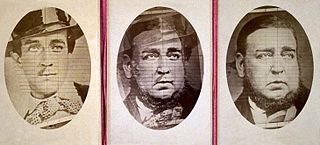
The Tichborne case was a legal cause célèbre that captivated Victorian England in the 1860s and 1870s. It concerned the claims by a man sometimes referred to as Thomas Castro or as Arthur Orton, but usually termed "the Claimant", to be the missing heir to the Tichborne baronetcy. He failed to convince the courts, was convicted of perjury and served a long prison sentence.

The Golden Treasury of English Songs and Lyrics is a popular anthology of English poetry, originally selected for publication by Francis Turner Palgrave in 1861. It was considerably revised, with input from Tennyson, about three decades later. Palgrave excluded all poems by poets then still alive.

Sir William Bovill, PC, FRS was an English lawyer, politician and judge. He served as Chief Justice of the Common Pleas between 1866 and his death in 1873.
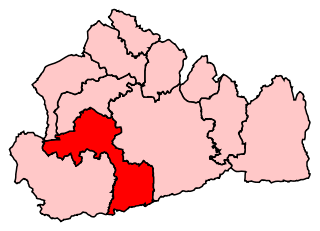
Guildford is a constituency in Surrey represented in the House of Commons of the UK Parliament since 2019 by Angela Richardson, a Conservative.

Worplesdon is a village 3.1 miles (5.0 km) NNW of Guildford in Surrey, England and a large dispersed civil parish that includes the settlements of: Worplesdon itself, Fairlands, Jacobs Well, Rydeshill and Wood Street Village, all various-sized smaller settlements, well-connected by footpaths and local roads. Its area includes Whitmoor Common, which can be a collective term for all of its commons.

William Heinemann Ltd., with the imprint Heinemann, was a London publisher founded in 1890 by William Heinemann. Their first published book, 1890's The Bondman, was a huge success in the United Kingdom and launched the company. He was joined in 1893 by Sydney Pawling. Heinemann died in 1920 and Pawling sold the company to Doubleday, having worked with them in the past to publish their works in the United States. Pawling died in 1922 and new management took over. Doubleday sold his interest in 1933.
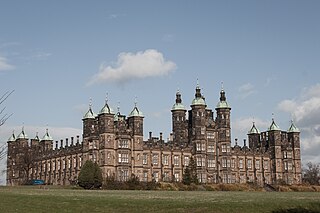
West Coates or Wester Coates is a residential district of central Edinburgh, the capital of Scotland. It is on the A8, in proximity to Haymarket railway station and Roseburn, west of the city centre, bounded by the Water of Leith on its north side.

William Brockedon was a 19th-century English painter, writer and inventor.

Villiers Street is a street in London connecting the Strand with the Embankment. It is partly pedestrianised; traffic runs northbound only up to John Adam Street, where vehicles must turn right. It was built by Nicholas Barbon in the 1670s on the site of York House, the property of George Villiers, Duke of Buckingham, whom the street commemorates. A watergate in nearby Embankment Gardens is the only remnant of the mansion and shows the original position of the north bank of the River Thames.

The Fringes of the Fleet is a booklet written in 1915 by Rudyard Kipling (1865–1936). The booklet contains essays and poems about nautical subjects in World War I.

Charles Wolcott Balestier was a promising American writer, editor, and publisher who died young, and is now remembered primarily for his connection to Rudyard Kipling. His sister Carrie Balestier married Kipling in 1891.
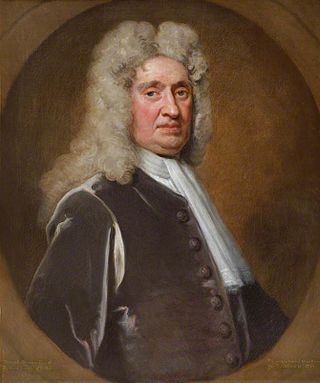
Denzil Onslow of Pyrford was a British Whig politician who sat in the English and British House of Commons between 1679 and 1721. Through advantageous marriages, he obtained a country estate and became prominent in Surrey politics of the Hanoverian era, although his great nephew Arthur Onslow, as Speaker, judged that Denzil knew "no more of the business [of the House of Commons] than one who had been of the standing of a session".

There have been two baronetcies created for persons with the surname Tichborne, both in the Baronetage of England. Both creations are extinct.
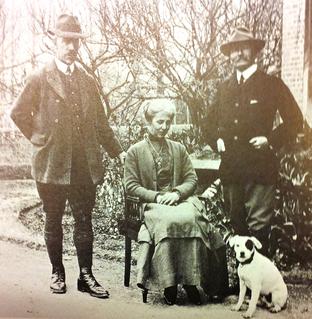
Frederick Henry Andrews (1866–1957) was a British educator and scholar noted especially for his catalogs of the Asiatic artifacts and manuscripts collected by the expeditions of Dr Aurel Stein. In the circle of close friends established at his household in Lahore, he was jocularly known as The Baron.

Aldershot Park is an urban park in the town of Aldershot in Hampshire. The park is located on Guildford Road near Aldershot Cricket Club and the Lido and is owned and maintained by Rushmoor Borough Council.
Walter Tichborne (c.1580–1637) of Aldershot in Hampshire was MP for Petersfield from 1614 to 1621.
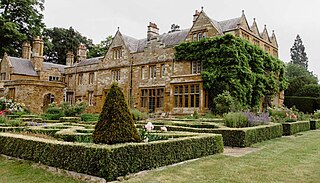
Flore House in Flore, Northamptonshire, is a country house of historical significance and is Grade II listed on the English Heritage Register. It was built in 1608 for the Enyon family and was the residence of notable people over the next four centuries. Today it provides guest accommodation and caters for special events including weddings.

Joseph Baxendale (1785–1872) was an English entrepreneur, known for rebuilding and expanding the Pickfords carrier company in the middle of the 19th century.






















